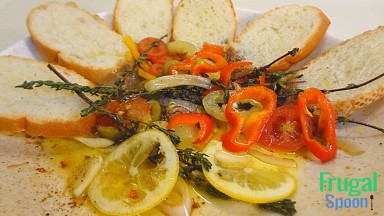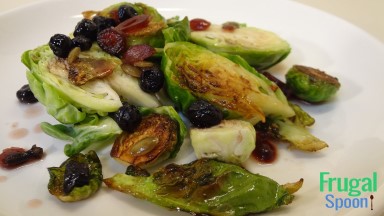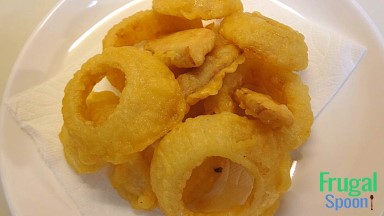Filipino Pork Adobo Tacos
Published: August 18, 2021 by Ivan
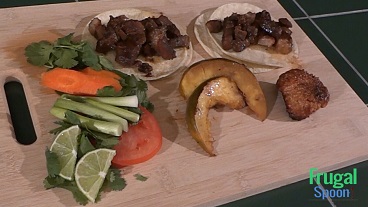

Pork adobo is a typical Filipino stew. Filipinos adobo beef, pork, chicken, fish, shellfish, nuts, and vegetables. Filipino adobo is a vinegar-based stew that is prepared black or white. Nowadays, most people serve it on the black side. The adobo pork can be cooked twice, or even grilled, then served over rice. I like fusion food, so we are fusing the Filipino stew with Mexican corn tortillas and condiments.

There are many recipes for adobo in the Philippines. There are other countries that make adobo. Many of the words that Filipinos use are similar to Spanish words, and adobo is no different. Adobar is Spanish for a marinade. The Spanish version of adobo is quite different than Filipino adobe, and has vinegar, garlic, lots of paprika giving it that distinct red color, oregano, and salt. Then we have Caribbean adobo, which is a rub. Just like barbecue, there are wet and dry versions. The dry Caribbean adobo has garlic powder, onion powder, dried oregano, lime juice, pineapple juice, salt, and pepper. Other local fruits like mango may also be added.


Any type of pork can be used in the adobo stew. I am using pork leg with skin. The pork leg can sold in different cuts. The cuts can be large or small. I purchased several cubes for stewing from an Asian market, but I have seen the same cuts in Mexican markets.

Homemade chicharron tastes very different than a bag of pork rind snacks. Chicharron is not required for this dish, but it is a nice contrast in texture and flavor.
INGREDIENTS
1-2 Lbs. Pork Leg Meat with skin (Most any cut of pork with skin and meat will work.)
1/4 cup Soy Sauce
1/4 cup Vinegar
1/4 cup Water
1 Tbsp Sugar
1/4 tsp Peppercorns or Crushed Black pepper
1 Tbsp Garlic
1/2 Star Anise (optional)
1/3 White Onion
2 Bay leaves
1 Acorn Squash or a large Russet Potato (peeled and cubed)
EQUIPMENT (OPTIONAL)
Infrared Convection Oven (Click for Amazon Link)
Infrared Thermometer Gun & Probe (Click for Amazon Link)
How to make Filipino Pork Adobo Tacos
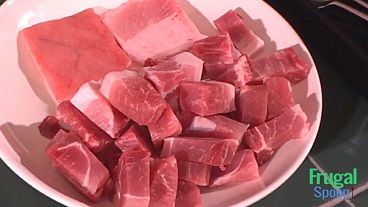
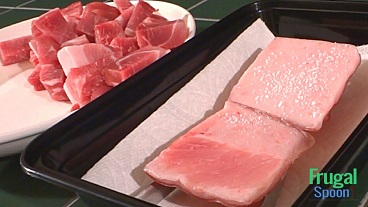
Slice the skin off the pork with some of the fat included. Leave a little fat on the meat portion of the pork to provide flavor while stewing. You can skim the fat off the stew after it cools, but for now, the fat provides the flavor.

Sprinkle kosher salt on all sides of the skin. Place the pork skin in a container with a wire rack. Cover the pork skin with a paper towel, and then place the pork skin in the refrigerator for at least 24 hours. I have had pork skin dry-age in the refrigerator for five days and it was amazing. Try to keep your refrigerator at 40 degrees Fahrenheit for proper dry aging. I suggest using a laser temperature gun to check on the meat’s temperature, and for locating the coldest area in your refrigerator. Check this link for my favorite laser temperature gun. I place my dry-age items in the coldest part of my refrigerator. This is usually the bottom back of the refrigerator. It works for me, but the size of your refrigerator, and how often you open it will require more or less cooling.
Slice the pork into 1/3 inch square strips. If you plan to serve the pork adobo as a stew with rice, then cut the pork into one and half-inch cubes or larger. My Plus 1 loves Russet potatoes that have been stewed in adobo sauce. Adobo, like many stews, tastes great the day you make them, but the stews are phenomenal the second day after refrigeration. Refrigeration overnight allows the fat to float to the surface and solidify. Then we can simply skim off the fat out of the adobo, then reheat the adobo to the proper temperature for pork. Check the USDA website for proper cooking temperatures for pork.
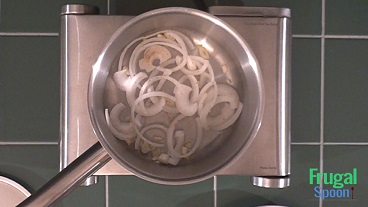
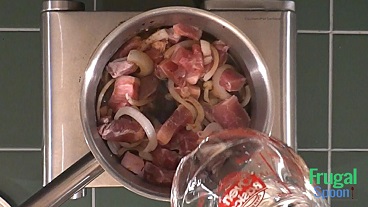
Set a hot plate or your stovetop element to medium-high temperature so we can brown some aromatics. Chop 1 Tbsp garlic, then peel and slice 1/3 white onion. Measure out 1 Tbsp sugar, 1/4 tsp crushed black pepper, 2 whole bay leaves, 1/2 dried star anise flower, and slice the acorn squash into one-half to one-inch slices or cubes. If you use potatoes, then I prefer to cut my potatoes into one and half-inch cubes. Remove all the seeds and other items from the acorn squash, so all you have is firm squash on the inside. The acorn squash and its skin will be very tender after it has cooked.

Filipinos are used to peppercorns in their adobo and are familiar with removing them before each bite. But you don’t want to surprise your guests, so I use crushed black pepper as a substitute. Many Asian recipes start with browning onions because the onions act like lubricants like spray oil. Add the chopped garlic, onions, star anise, and black pepper to the pot. Mix the items, and allow them to briefly brown and become aromatic. Add the pork to the browned onions and garlic, then stir the ingredients. Many recipes call for marinating the adobo pork overnight before cooking, but frankly, I don’t know any Filipinos that take that step. Add a quarter cup of soy sauce, a quarter cup of vinegar, a quarter cup of water, two bay leaves, and a tablespoon of sugar. And stir the ingredients to combine.
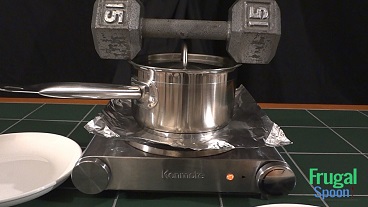
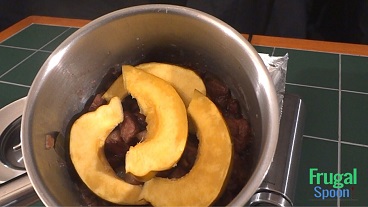
Many people pressure cook their adobo. Pressure cooking is fast. I have a pressure cooker, but I know many people that are afraid of using pressure cookers. I am placing a sheet of tin foil under my pot as a drip tray. Then I am placing a 15-pound iron exercise weight on top of the lid. Fortunately for me, the weight fits perfectly on the lid creating a nice stable surface for the weight. My pot and lid have a pretty good seal, so 15 pounds of weight will create some pressure on the inside of the pot and will tenderize the meat faster. The idea is the weight will fall off, or the liquid will evaporate before anything catastrophic happens. In the meantime, the adobo is being cooked under pressure.

Allow the meat to cook on medium-high heat for 40 to 50 minutes. The iron weight provides a big advantage. I can take the weight off, and check the tenderness of the meat. Removing the weight will allow us to add the acorn squash, or potatoes 40 minutes into cooking, so we can pressure cook the squash for 15 minutes. The pork adobo is starting to caramelize and tenderize after 40 minutes. Let’s add the sliced acorn squash to the top, then replace the lid, and 15-pound weight. The acorn squash and its skin will tenderize under pressure in 10 to 15 minutes. Use a toothpick or fork to check the tenderness of the squash. I am looking for a baked potato feel through the meat of the squash. Once the squash is tender, then remove the pot from the heat, and set it somewhere to cool.
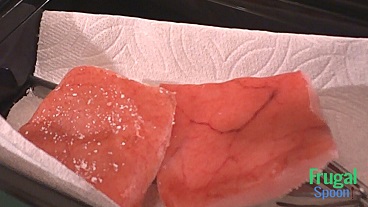
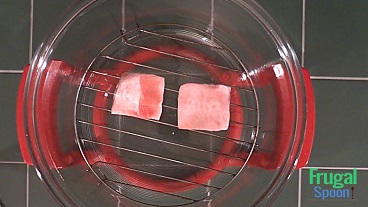
Let’s jump back to the pork rind. The salting and refrigeration have reduced the thickness of the pork rind. The pork rind will feel like soft leather and have a faint smell of pork. Almost one-tenth its original pork smell. Rinse the pork rind under cold water to remove the salt, and pat the pork rind dry with a paper towel. To be honest this pork rind was dry-aged for 48 hours. Sometimes you have to switch recipes because someone wants to eat something different other than what you planned, or life just gets in the way of your cooking plans. The pork rind has been washed and dried.

I am using an infrared convection oven to bake the pork rind. Place the pork rind skin-side down on the top rack. I am baking the pork rind at 500 degrees Fahrenheit. Baking chicharron in the oven is like making popcorn in a pot. The start is calm, but the food will cook quickly at the end. I can’t tell you the length of time to cook the pork rind, since the time varies based on your oven temperature, and rack height. Typically, the pork rind will curl down toward the outer skin within three to four minutes at 500 degrees. As the fat renders off the skin, then the pork rind will curl in the opposite direction. The outer skin will start puffing up like popcorn within eight to ten minutes of baking. We are looking for fluffy outer skin that has bloomed. Flip the chicharron and cook it further if you prefer. The latter part of baking chicharron is critical like frying chicken. The chicharron can burn easily since most of the fat is gone.
We have our Filipino pork adobo on warmed corn tortillas. If you are not a fan of corn tortillas, then try this. Dip your corn tortilla in any broth, stock, or watered-down spaghetti sauce. Shake off any excess liquid, then warm the tortilla on low heat on a lightly oiled pan. Warm the corn tortilla for two minutes on each side. Remove the tortilla from the pan once the broth, stock, or sauce has lightly caramelized. The tortilla should be soft, not flimsy, or sticky when cooked.

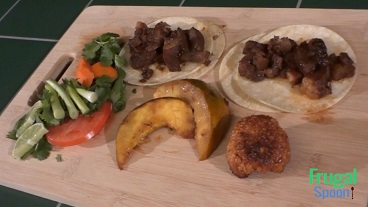
Well, I burnt my chicharron a little, but not too bad. Practice makes perfect. Bright lights will obscure how far along your chicharron is baking, so watch your chicharron like a hawk. Allow the chicharron to cool before serving with vinegar, garlic, and spicy peppers as a dipping sauce.

We also have the pressure-cooked acorn squash. Garnish with pickled carrots, cilantro, green onion, cauliflower, sliced lime, and sliced tomatoes. See Pickled Jalapeno, Carrots & Onions recipe https://frugalspoon.com/wr0039-pickled-jalapeno-carrots-onions/), and Guajillo Chili Sauce for Tacos recipe (https://frugalspoon.com/wr0040-guajillo-chili-sauce-for-tacos/) to add more depth of flavor to your next meal.
Thanks for stopping by. I hope you enjoy your own Filipino pork adobo tacos. Remember to share your recipes.
Until next time. Adios…Ivan out!
Contact Us
Contact
Let's chat!
Need more information? Send me an email or drop me a line.
- Ivan@FrugalSpoon.com
- Mail: PO Box 91, Fairbury, Il. 61739




